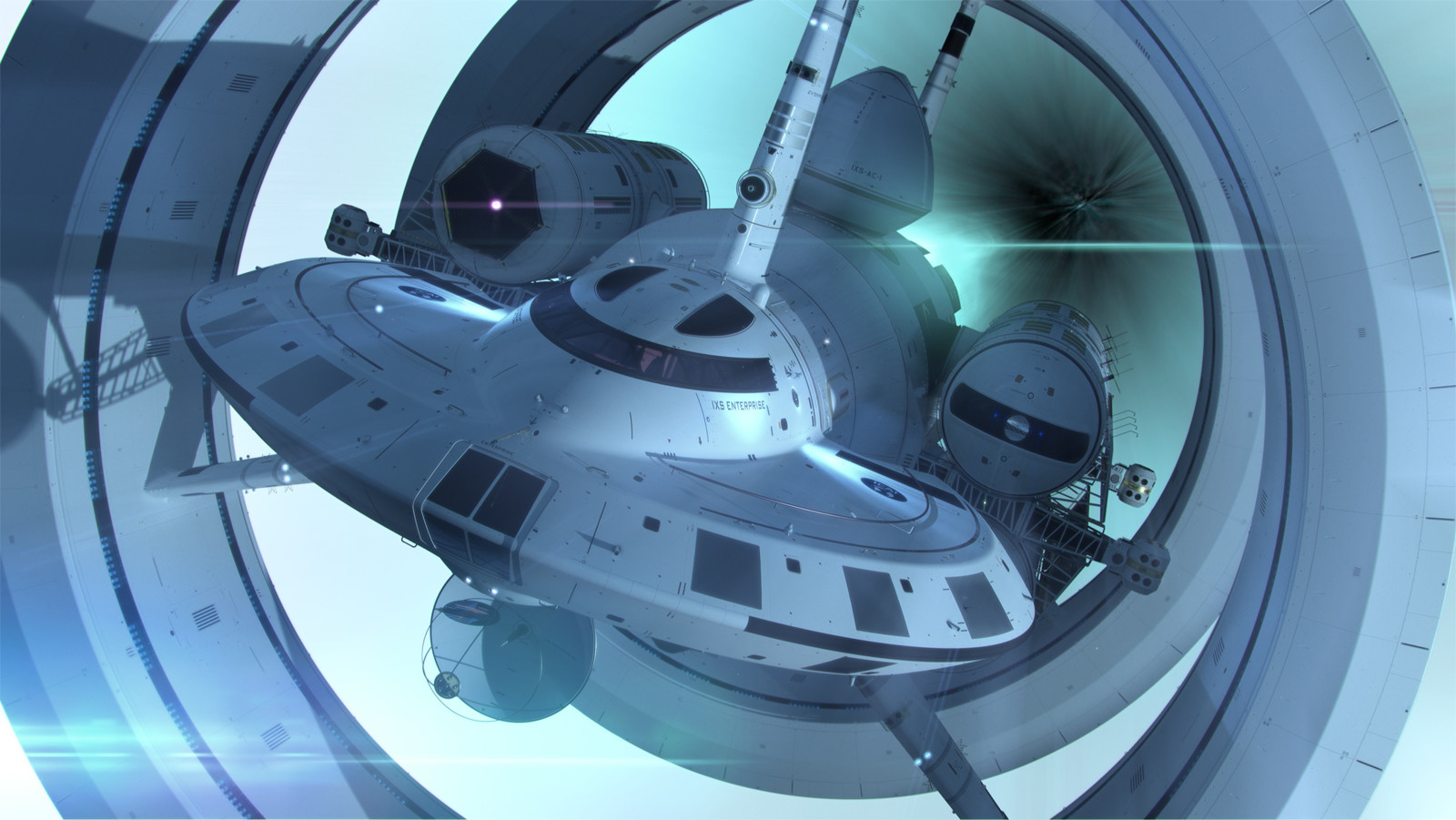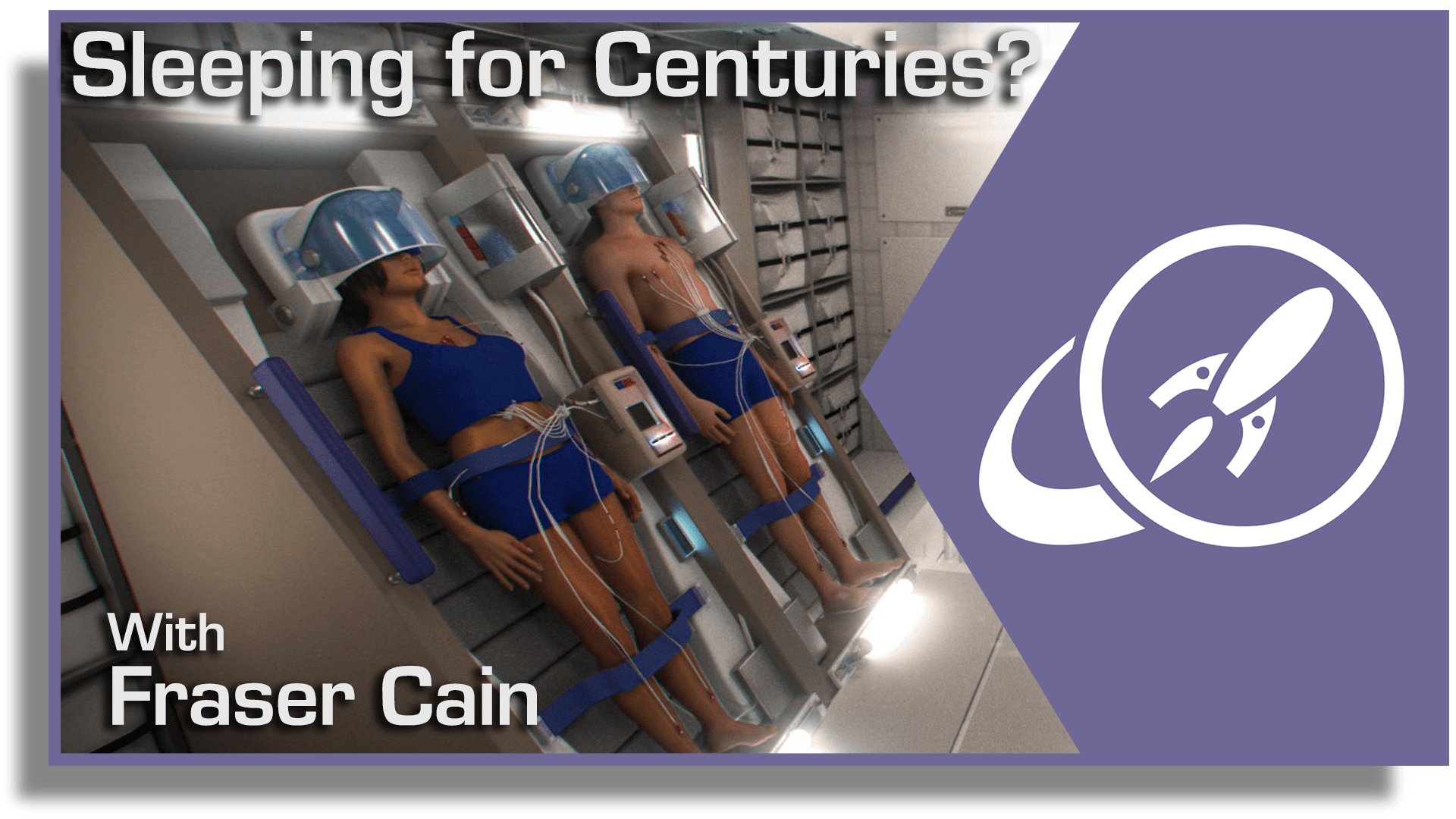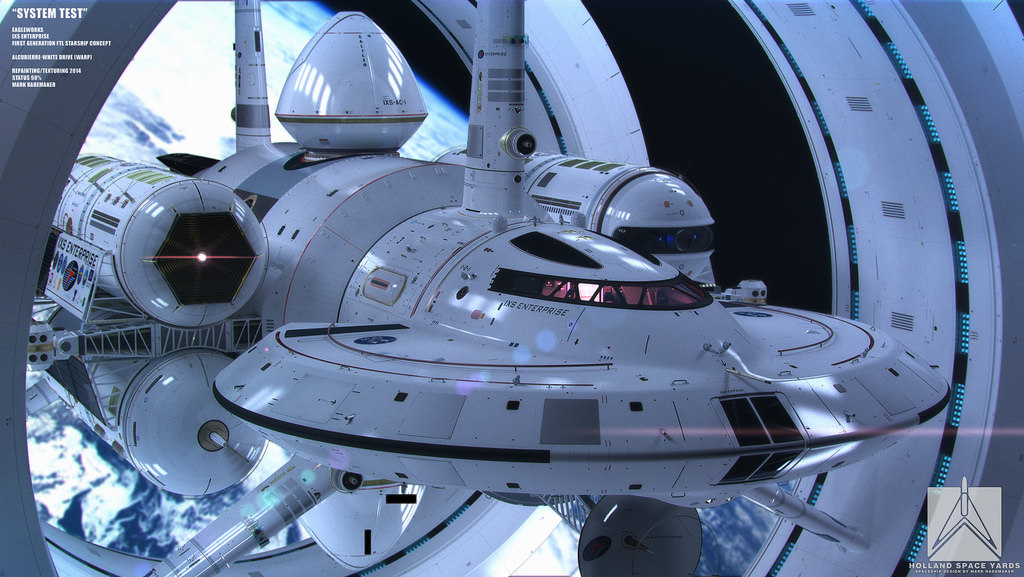Warp drives have a long history of not existing, despite their ubiquitous presence in science fiction. Writer John Campbell first introduced the idea in a science fiction novel called Islands of Space. These days, thanks to Star Trek in particular, the term is very familiar. It’s almost a generic reference for superliminal travel through hyperspace. Whether or not warp drive will ever exist is a physics problem that researchers are still trying to solve, but for now, it’s theoretical.
Continue reading “What if you Flew Your Warp Drive Spaceship into a Black Hole?”Warp Drives Could Generate Gravitational Waves

Will future humans use warp drives to explore the cosmos? We’re in no position to eliminate the possibility. But if our distant descendants ever do, it won’t involve dilithium crystals, and Scottish accents will have evaporated into history by then.
Continue reading “Warp Drives Could Generate Gravitational Waves”If Warp Drives are Impossible, Maybe Faster Than Light Communication is Still on the Table?
I’m sure many readers of Universe Today are like me, fans of the science fiction genre. From the light sabres of Star Wars to the neuralyzer of Men in Black, science fiction has crazy inventions aplenty and once science fiction writers dream it, scientists and engineers try and create it. Perhaps the holy grail of science fiction creations is the warp drive from Star Trek and it is fair to say that many have tried to work out if it is even possible to travel faster than the speed of light. To date, alas, to no avail but if the warp drive eludes us, what about faster than light communication!
Continue reading “If Warp Drives are Impossible, Maybe Faster Than Light Communication is Still on the Table?”Gravitational Wave Observatories Could Search for Warp Drive Signatures

In 2016, scientists at the Laser Interferometer Gravitational-Wave Observatory (LIGO) announced that they had made the first confirmed detection of gravitational waves (GWs). This discovery confirmed a prediction made a century before by Einstein and his Theory of General Relativity and opened the door to a whole new field of astrophysical research. By studying the waves caused by the merger of massive objects, scientists could probe the interior of neutron stars, detect dark matter, and discover new particles around supermassive black holes (SMBHs).
According to new research led by the Advanced Propulsion Laboratory at Applied Physics (APL-AP), GWs could also be used in the Search for Extraterrestrial Intelligence (SETI). As they state in their paper, LIGO and other observatories (like Virgo and KAGRA) have the potential to look for GWs created by Rapid And/or Massive Accelerating spacecraft (RAMAcraft). By combining the power of these and next-generation observatories, we could create a RAMAcraft Detection And Ranging (RAMADAR) system that could probe all the stars in the Milky Way (100 to 200 billion) for signs of warp-drive-like signatures.
Continue reading “Gravitational Wave Observatories Could Search for Warp Drive Signatures”Alcubierre Gives us an Update on his Ideas About Warp Drives
If you want a galaxy-spanning science fiction epic, you’re going to need faster than light travel. The alternative is taking decades or centuries to reach an alien star system, which isn’t nearly as much fun. So, you start with some wild scientific idea, add a bit of technobabble, and poof! Quam Celerrime ad Astra. Everything from wormholes to hyperspace has been used in sci-fi, but perhaps the best known FTL trope is warp drive.
Continue reading “Alcubierre Gives us an Update on his Ideas About Warp Drives”Just How Feasible is a Warp Drive?
It’s hard living in a relativistic Universe, where even the nearest stars are so far away and the speed of light is absolute. It is little wonder then why science fiction franchises routinely employ FTL (Faster-than-Light) as a plot device. Push a button, press a pedal, and that fancy drive system – whose workings no one can explain – will send us to another location in space-time.
However, in recent years, the scientific community has become understandably excited and skeptical about claims that a particular concept – the Alcubierre Warp Drive – might actually be feasible. This was the subject of a presentation made at this year’s American Institute of Aeronautics and Astronautics Propulsion and Energy Forum, which took place from August 19th to 22nd in Indianapolis.
Continue reading “Just How Feasible is a Warp Drive?”Is Human Hibernation Possible? Going to Sleep for Long Duration Spaceflight
We’ve spent a few articles on Universe Today talking about just how difficult it’s going to be to travel to other stars. Sending tiny unmanned probes across the vast gulfs between stars is still mostly science fiction. But to send humans on that journey? That’s just a level of technology beyond comprehension.
For example, the nearest star is Proxima Centauri, located a mere 4.25 light years away. Just for comparison, the Voyager spacecraft, the most distant human objects ever built by humans, would need about 50,000 years to make that journey.
I don’t know about you, but I don’t anticipate living 50,000 years. No, we’re going to want to make the journey more quickly. But the problem, of course, is that going more quickly requires more energy, new forms of propulsion we’ve only starting to dream up. And if you go too quickly, mere grains of dust floating through space become incredibly dangerous.
Based on our current technology, it’s more likely that we’re going to have to take our time getting to another star.
And if you’re going to go the slower route, you’ve got a couple of options. Create a generational ship, so that successive generations of humans are born, live out their lives, and then die during the hundreds or even thousands of year long journey to another star.

Imagine you’re one of the people destined to live and die, never reaching your destination. Especially when you look out your window and watch a warp ship zip past with all those happy tourists headed to Proxima Centauri, who were start enough to wait for warp drives to be invented.
No, you want to sleep for the journey to the nearest star, so that when you get there, it’s like no time passed. And even if warp drive did get invented while you were asleep, you didn’t have to see their smug tourist faces as they zipped past.
Is human hibernation possible? Can we do it long enough to survive a long-duration spaceflight journey and wake up again on the other side?
Before I get into this, we’re just going to have to assume that we never merge with our robot overlords, upload ourselves into the singularity, and effortlessly travel through space with our cybernetic bodies.
For some reason, that whole singularity thing never worked out, or the robots went on strike and refused to do our space exploration for us any more. And so, the job of space travel fell to us, the fragile, 80-year lifespanned mammals. Exploring the worlds within the Solar System and out to other stars, spreading humanity into the cosmos.
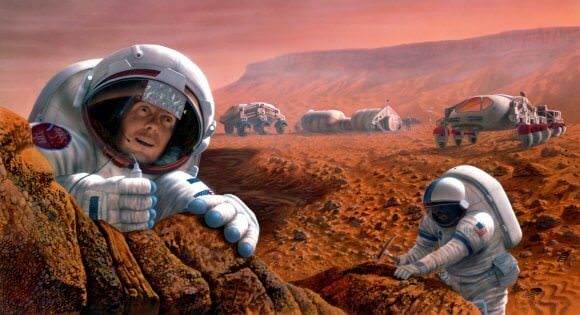
Come on, we know it’ll totally be the robots. But that’s not what the science fiction tells us, so let’s dig into it.
We see animals, and especially mammals hibernating all the time in nature. In order to be able survive over a harsh winter, animals are capable of slowing their heart rate down to just a few beats a minute. They don’t need to eat or drink, surviving on their fat stores for months at a time until food returns.
It’s not just bears and rodents that can do it, by the way, there are actually a couple of primates, including the fat-tailed dwarf lemur from Madagascar. That’s not too far away on the old family tree, so there might be hope for human hibernation after all.
In fact, medicine is already playing around with human hibernation to improve people’s chances to survive heart attacks and strokes. The current state of this technology is really promising.
They use a technique called therapeutic hypothermia, which lowers the temperature of a person by a few degrees. They can use ice packs or coolers, and doctors have even tried pumping a cooled saline solution through the circulatory system. With the lowered temperature, a human’s metabolism decreases and they fall unconscious into a torpor.
But the trick is to not make them so unconscious that they die. It’s a fine line.
The results have been pretty amazing. People have been kept in this torpor state for up to 14 days, going through multiple cycles.
The therapeutic use of this torpor is still under research, and doctors are learning if it’s helpful for people with heart attacks, strokes or even the progression of diseases like cancer. They’re also trying to figure out if there are any downsides, but so far, there don’t seem to be any long-term problems with putting someone in this torpor state.
A few years ago, SpaceWorks Enterprises delivered a report to NASA on how they could use this therapeutic hypothermia for long duration spaceflight within the Solar System.
Currently, a trip to Mars takes about 6-9 months. And during that time, the human passengers are going to be using up precious air, water and food. But in this torpor state, SpaceWorks estimates that the crew will a reduction in their metabolic rate of 50 to 70%. Less metabolism, less resources needed. Less cargo that needs to be sent to Mars.
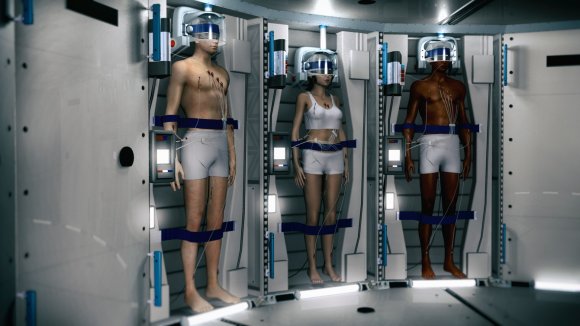
The astronauts wouldn’t need to move around, so you could keep them nice and snug in little pods for the journey. And they wouldn’t get into fights with each other, after 6-9 months of nothing but day after day of spaceflight.
We know that weightlessness has a negative effect on the body, like loss of bone mass and atrophy of muscles. Normally astronauts exercise for hours every day to counteract the negative effects of the reduced gravity. But SpaceWorks thinks it would be more effective to just put the astronauts into a rotating module and let artificial gravity do the work of maintaining their conditioning.
They envision a module that’s 4 metres high and 8 metres wide. If you spin the habitat at 20 revolutions per minute, you give the crew the equivalent of Earth gravity. Go at only 11.8 RPM and it’ll feel like Mars gravity. Down to 7.8 and it’s lunar gravity.
Normally spinning that fast in a habitat that small would be extremely uncomfortable as the crew would experience different forces at different parts of their body. But remember, they’ll be in a state of torpor, so they really won’t care.
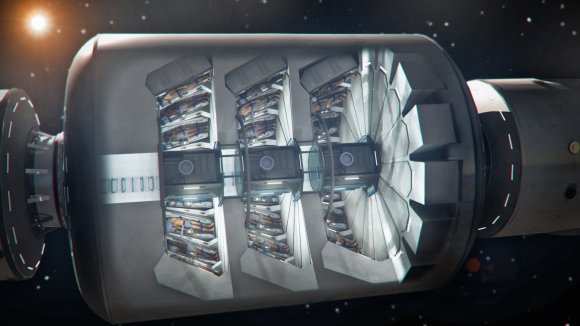
Current plans for sending colonists to Mars would require 40 ton habitats to support 6 people on the trip. But according to SpaceWorks, you could reduce the weight down to 15 tons if you just let them sleep their way through the journey. And the savings get even better with more astronauts.
The crew probably wouldn’t all sleep for the entire journey. Instead, they’d sleep in shifts for a few weeks. Taking turns to wake up, check on the status of the spacecraft and crew before returning to their cryosleep caskets.
What’s the status of this now? NASA funded stage 1 of the SpaceWorks proposal, and in July, 2016 NASA moved forward with Phase 2 of the project, which will further investigate this technique for Mars missions, and how it could be used even farther out in the Solar System.
Elon Musk should be interested in seeing their designs for a 100-person module for sending colonists to Mars.
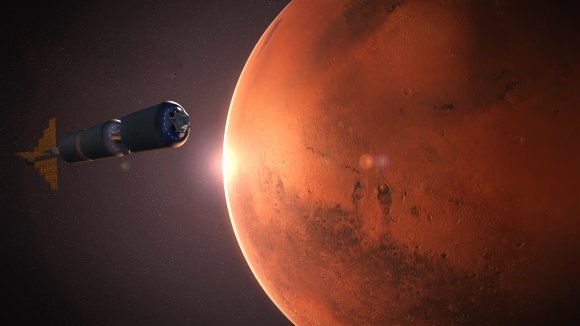
In addition, the European Space Agency has also been investigating human hibernation, and a possible way to enable long-duration spaceflight. They have plans to test out the technology on various non-hibernating mammals, like pigs. If their results are positive, we might see the Europeans pushing this technology forward.
Can we go further, putting people to sleep for decades and maybe even the centuries it would take to travel between the stars?
Right now, the answer is no. We don’t have any technology at our disposal that could do this. We know that microbial life can be frozen for hundreds of years. Right now there are parts of Siberia unfreezing after centuries of permafrost, awakening ancient microbes, viruses, plants and even animals. But nothing on the scale of human beings.
When humans freeze, ice crystals form in our cells, rupturing them permanently. There is one line of research that offers some hope: cryogenics. This process replaces the fluids of the human body with an antifreeze agent which doesn’t form the same destructive crystals.
Scientists have successfully frozen and then unfrozen 50-milliliters (almost a quarter cup) of tissue without any damage.
In the next few years, we’ll probably see this technology expanded to preserving organs for transplant, and eventually entire bodies, and maybe even humans. Then this science fiction idea might actually turn into reality. We’ll finally be able to sleep our way between the stars.
What is the Alcubierre “Warp” Drive?
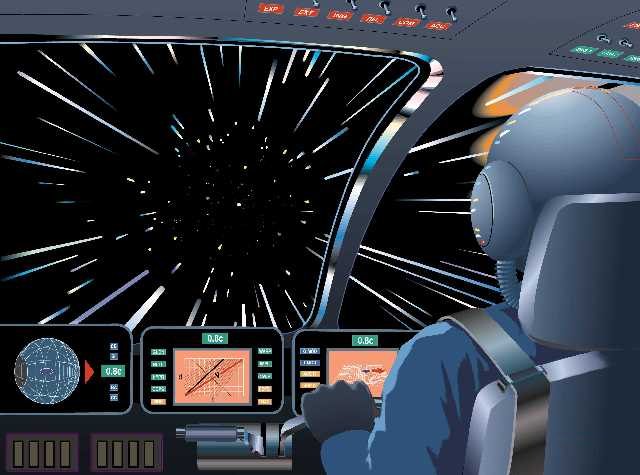
It’s always a welcome thing to learn that ideas that are commonplace in science fiction have a basis in science fact. Cryogenic freezers, laser guns, robots, silicate implants… and let’s not forget the warp drive! Believe it or not, this concept – alternately known as FTL (Faster-Than-Light) travel, Hyperspace, Lightspeed, etc. – actually has one foot in the world of real science.
In physics, it is what is known as the Alcubierre Warp Drive. On paper, it is a highly speculative, but possibly valid, solution of the Einstein field equations, specifically how space, time and energy interact. In this particular mathematical model of spacetime, there are features that are apparently reminiscent of the fictional “warp drive” or “hyperspace” from notable science fiction franchises, hence the association.
Background:
Since Einstein first proposed the Special Theory of Relativity in 1905, scientists have been operating under the restrictions imposed by a relativistic universe. One of these restrictions is the belief that the speed of light is unbreakable and hence, that there will never be such a thing as FTL space travel or exploration.
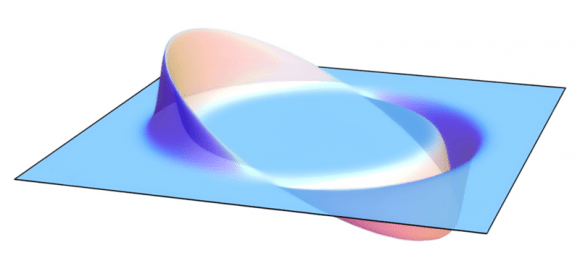
Even though subsequent generations of scientists and engineers managed to break the sound barrier and defeat the pull of the Earth’s gravity, the speed of light appeared to be one barrier that was destined to hold. But then, in 1994, a Mexican physicist by the name of Miguel Alcubierre came along with proposed method for stretching the fabric of space-time in way which would, in theory, allow FTL travel to take pace.
Concept:
To put it simply, this method of space travel involves stretching the fabric of space-time in a wave which would (in theory) cause the space ahead of an object to contract while the space behind it would expand. An object inside this wave (i.e. a spaceship) would then be able to ride this region, known as a “warp bubble” of flat space.
This is what is known as the “Alcubierre Metric”. Interpreted in the context of General Relativity, the metric allows a warp bubble to appear in a previously flat region of spacetime and move away, effectively at speeds that exceed the speed of light. The interior of the bubble is the inertial reference frame for any object inhabiting it.
Since the ship is not moving within this bubble, but is being carried along as the region itself moves, conventional relativistic effects such as time dilation would not apply. Hence, the rules of space-time and the laws of relativity would not be violated in the conventional sense.

One of the reasons for this is because this method would not rely on moving faster than light in the local sense, since a light beam within this bubble would still always move faster than the ship. It is only “faster than light” in the sense that the ship could reach its destination faster than a beam of light that was traveling outside the warp bubble.
Difficulties:
However, there is are few problems with this theory. For one, there are no known methods to create such a warp bubble in a region of space that would not already contain one. Second, assuming there was a way to create such a bubble, there is not yet any known way of leaving once inside it. As a result, the Alcubierre drive (or metric) remains in the category of theory at this time.
Mathematically, it can be represented by the following equation: ds2= – (a2 – BiBi) dt2 + 2Bi dxi dt + gijdxi dxj, where a is the lapse function that gives the interval of proper time between nearby hypersurfaces, Bi is the shift vector that relates the spatial coordinate systems on different hypersurfaces and gij is a positive definite metric on each of the hypersurfaces.
Attempts at Development:
In 1996, NASA founded a research project known as the Breakthrough Propulsion Physics Project (BPP) to study various spacecraft proposals and technologies. In 2002, the project’s funding was discontinued, which prompted the founder – Marc G. Millis – and several members to create the Tau Zero Foundation. Named after the famous novel of the same name by Poul Anderson, this organization is dedicated to researching interstellar travel.
In 2012, NASA’s Advanced Propulsion Physics Laboratory (aka. Eagleworks) announced that they had began conducting experiments to see if a “warp drive” was in fact possible. This included developing an interferometer to detect the spatial distortions produced by the expanding and contracting space-time of the Alcubierre metric.
The team lead – Dr. Harold Sonny White – described their work in a NASA paper titled Warp Field Mechanics 101. He also explained their work in NASA’s 2012 Roundup publication:
“We’ve initiated an interferometer test bed in this lab, where we’re going to go through and try and generate a microscopic instance of a little warp bubble. And although this is just a microscopic instance of the phenomena, we’re perturbing space time, one part in 10 million, a very tiny amount… The math would allow you to go to Alpha Centauri in two weeks as measured by clocks here on Earth. So somebody’s clock onboard the spacecraft has the same rate of time as somebody in mission control here in Houston might have. There are no tidal forces, no undue issues, and the proper acceleration is zero. When you turn the field on, everybody doesn’t go slamming against the bulkhead, (which) would be a very short and sad trip.”
In 2013, Dr. White and members of Eagleworks published the results of their 19.6-second warp field test under vacuum conditions. These results, which were deemed to be inconclusive, were presented at the 2013 Icarus Interstellar Starship Congress held in Dallas, Texas.
When it comes to the future of space exploration, some very tough questions seem unavoidable. And questions like “how long will it take us to get the nearest star?” seem rather troubling when we don’t make allowances for some kind of hypervelocity or faster-than-light transit method. How can we expect to become an interstellar species when all available methods with either take centuries (or longer), or will involve sending a nanocraft instead?
At present, such a thing just doesn’t seem to be entirely within the realm of possibility. And attempts to prove otherwise remain unsuccessful or inconclusive. But as history has taught us, what is considered to be impossible changes over time. Someday, who knows what we might be able to accomplish? But until then, we’ll just have to be patient and wait on future research.
We have written many articles about the Alcubierre “Warp” Drive for Universe Today. Here’s Warp Drives Probably Impossible After All, Warp Drives and Cloaking Devices not just Science Fiction Anymore, Warp Drive May Come with a Killer Downside, Astronomy Without a Telescope – Warp Drive on Paper, and Zoom, Zoom, Zoom: Gorgeous Warp Ship Design Delights The Internet.
If you’d like more info on the Alcubierre “Warp” Drive, check out an article from Wikipedia. Also, check out another article about the warp drive spaceship engine.
We’ve also recorded an entire episode of Astronomy Cast all about Light Echoes. Listen here, Episode 215: Light Echoes.
Sources:
Zoom, Zoom, Zoom: Gorgeous Warp Ship Design Delights The Internet
“Let me take you on a little trip … we’re gonna travel faster than light,” the Kinks sang 42 years ago. Well, maybe this was the warp ship they were dreaming of.
Howard White (who we can confirm was a NASA employee as late as 2013) has a vision for a warp-drive ship that he’s been working on for a few years. White, whose biography describes him as the advanced propulsion theme lead for NASA’s engineering directorate, recently released his new vision of the spaceship in collaboration with artist Mark Rademaker. The result is gorgeous. More pictures below the jump.
As for how realistic his concept is, as non-physicists it’s tough for us to evaluate. Essentially, White is proposing some modifications to this warp drive concept by Miguel Alcubierre, which would create a zone of warped space time in front of and behind the spaceship to get it to move quickly. But White has been making the professional and media circuit in recent years touting his theories, and they are getting attention.
For more information on White’s theories, check out this research paper on NASA’s Technical Reports Server and this 2012 story in io9, where he was interviewed and explained his thinking back then. Also view the video below the pictures. Let us know what you think in the comments!
(h/t io9)
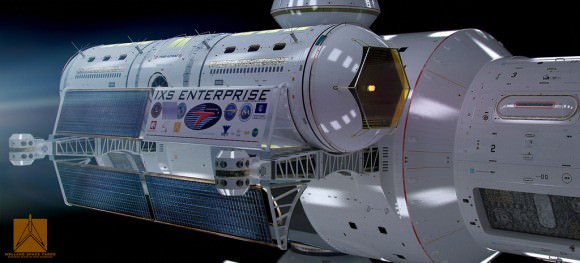
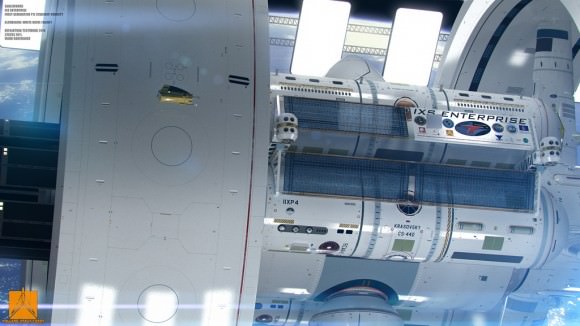
Weekly Space Hangout – Sep. 20, 2012
Once again, it’s time for the Weekly Space Hangout – our round up of all the big space news stories that you should be aware of. This week we talked about the following interesting stories in space and astronomy:
- NASA Working on a Real Warp Drive
- Transit of Phobos Seen by Curiosity
- What Happened at Neil Armstrong’s Funeral
- Curiosity’s First Rock Target: Jake
- Furthest Galaxy Discovered
Contributors: Nicole Gugliucci, Ian O’Neill, Jason Major, Amy Shira Teitel, Nancy Atkinson
Host: Fraser Cain
We record the Weekly Space Hangout every Thursday morning live at 10:00 am Pacific / 1:00 pm Eastern as a live Google+ Hangout.
If you want to make sure you never miss an episode, put it into your calendar. Click here to see our next event on Google+.




